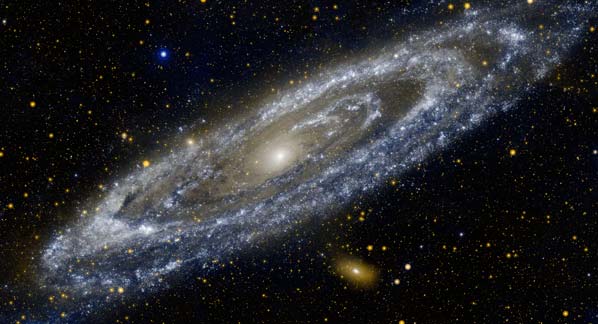Are Major Asteroids As Dangerous As Predicted? The Answer Arrives in 2003
London (SatireWire.com) — Disappointed after failing to take advantage of Earth’s relatively near miss with a large asteroid on Monday, scientists today excitedly unveiled what they called an “asteroid chute” that they said will direct the next massive space object directly into Earth’s path, where it can be studied more closely.
|
POTENTIAL OUTCOMES |
 |
| “We don’t know what will happen,” said one NASA astrophysicist. “It’s all so very exciting.” |
Scientists hope the redirected asteroid, now expected to strike Earth by June of 2003, will also settle a pair of long-running debates: Did an asteroid cause the extinction of the dinosaurs 65 million years ago? And what size must an asteroid be in order for it to render a planet uninhabitable?
According to Michael Banio of Great Britain’s Royal Astronomical Society, asteroid “2001 YB5” passed within 375,000 miles of Earth on Monday, but it was still too far away for useful studies to be conducted. And because YB5 was not discovered until December, scientists did not have time to prepare for its arrival. However, using electron particle impulses emitted by a modified NASA satellite early this morning, British and American astrophysicists said they successfully nudged the next asteroid, a kilometer-wide giant they’ve labeled 2002 CUL8R, directly into Earth’s path.
Asked what impact CUL8R will have, NASA astrophysicist Karen Lurg excitedly hesitated to speculate.
“Well, we’re not sure, and that’s the beauty of it,” she said. “What we think will happen is, the ECO (Earth Crossing Object), which most likely has an iron/nickel core, will slam into Earth with the force of roughly 1 million nuclear bombs. But now we’ll be able to test that hypothesis.”
“The 1 million nuclear bombs is an average postulation, by the way,” she added. “Some say 2 million. Others, believe it or not, say only 15,000. I think those folks are going to have egg on their faces when it’s all said and done.”
The non-scientific community, however, failed to share Lurg’s interest. Moments after the announcement, the United Nations Security Council demanded that CUL8R be directed away from Earth immediately, and dozens of international leaders called the chute “catastrophically irresponsible” and “just bad science.”
Scientists were quick to label the reaction “typical laymen’s myopia.”
“Every 10 million years, an object at least 1km across smashes into Earth, so it’s inevitable that someday it’s going to happen,” said Banio. “By steering such objects toward us now and studying the results close up, we will be better prepared for that eventuality.”
Meanwhile, Heinrich Voom, director of the Los Alamos National Laboratory, bristled at the charges of capriciousness. “Far from being irresponsible, we plan to strictly adhere to the Scientific Method; that is: Observe. Hypothesize. Predict. Test. Repeat until there are no discrepancies left,” he said.
“It’s the ‘no discrepancies left’ part that bothers me,” countered U.S. Homeland Security Director Tom Ridge.
Voom acknowledged that CUL8R may not settle every question. Three years ago, scientists at Los Alamos predicted an asteroid three miles across that strikes the mid-Atlantic Ocean would produce a tidal wave that would cover the East Coast of the United States to the Appalachian Mountains. It would also envelop the coasts of France and Portugal. Voom conceded CUL8R is not large enough to adequately test this model. However, he insisted, even a small tidal wave that only destroys Portugal would be useful in devising further experiments with the asteroid chute.
Portuguese President Jorge Sampaio, however, said he would rather the model remain in the hypothetical stage. “I do not want to be a resolved discrepancy,” he said.
Sampaio added that if the asteroid must come, he wished it would come now and “get it over with,” but Voom said the rock should not be rushed.
“If we were to increase the asteroid’s speed, we would not have enough time to apply for several multi-million-dollar grants we’ll need to study its impact,” he explained. “That is what I would call bad science.”
Copyright © 1999-2010, SatireWire.




